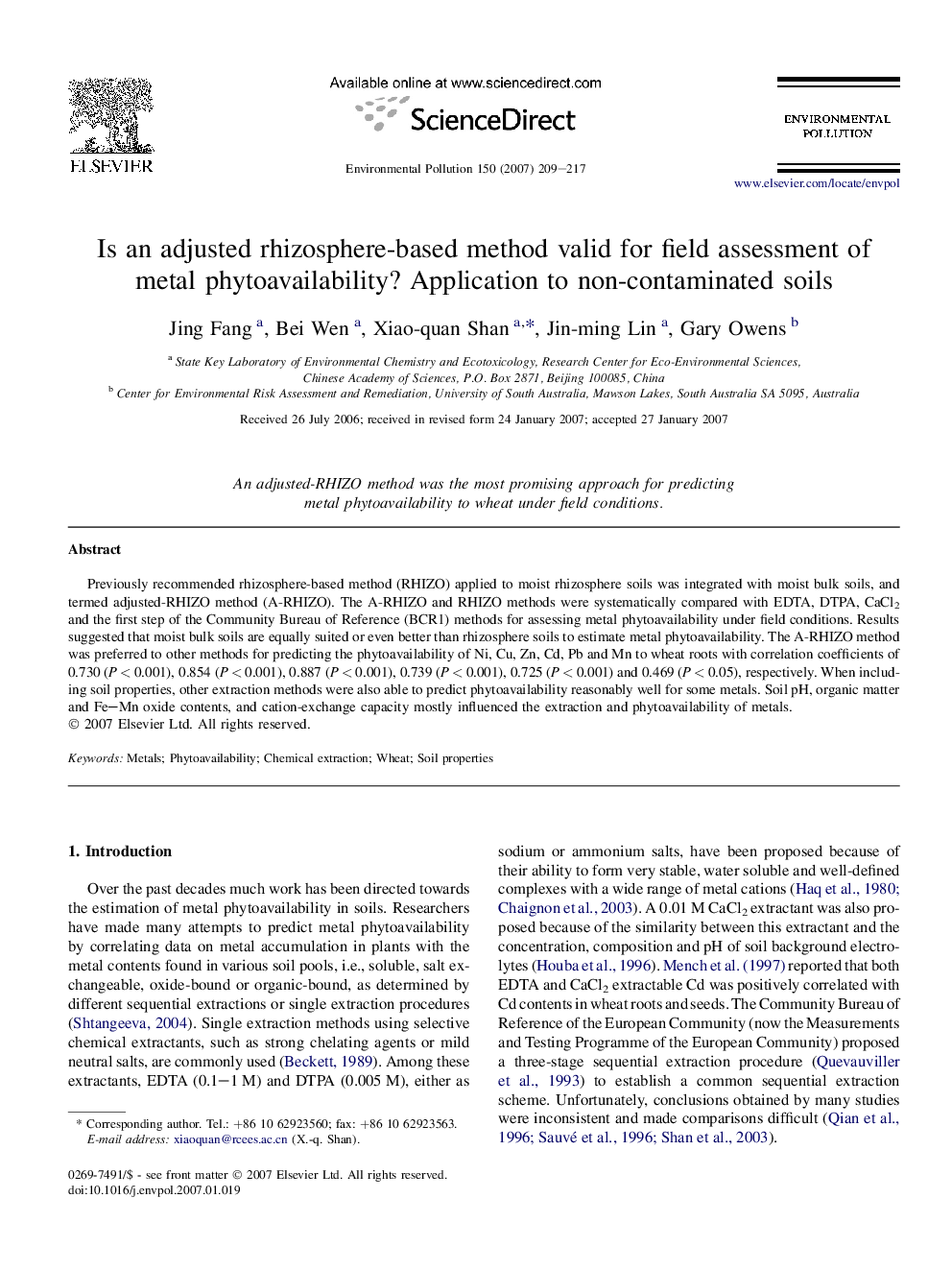| Article ID | Journal | Published Year | Pages | File Type |
|---|---|---|---|---|
| 4427154 | Environmental Pollution | 2007 | 9 Pages |
Previously recommended rhizosphere-based method (RHIZO) applied to moist rhizosphere soils was integrated with moist bulk soils, and termed adjusted-RHIZO method (A-RHIZO). The A-RHIZO and RHIZO methods were systematically compared with EDTA, DTPA, CaCl2 and the first step of the Community Bureau of Reference (BCR1) methods for assessing metal phytoavailability under field conditions. Results suggested that moist bulk soils are equally suited or even better than rhizosphere soils to estimate metal phytoavailability. The A-RHIZO method was preferred to other methods for predicting the phytoavailability of Ni, Cu, Zn, Cd, Pb and Mn to wheat roots with correlation coefficients of 0.730 (P < 0.001), 0.854 (P < 0.001), 0.887 (P < 0.001), 0.739 (P < 0.001), 0.725 (P < 0.001) and 0.469 (P < 0.05), respectively. When including soil properties, other extraction methods were also able to predict phytoavailability reasonably well for some metals. Soil pH, organic matter and Fe–Mn oxide contents, and cation-exchange capacity mostly influenced the extraction and phytoavailability of metals.
